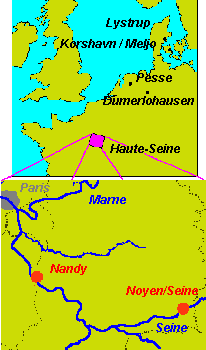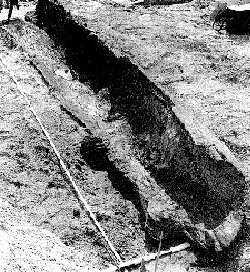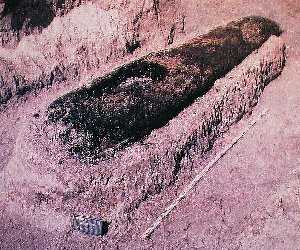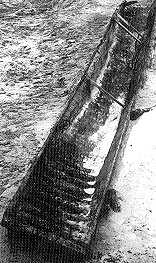|
|
|
For
at least 9000 years men has moved on water thanks to boats.
The
most former evidences are wrecks discovered in Northern Europe which date
from the
Mesolithic period .
|
|
|
|
The
prehistoric boats are of the pirogues of the monoxyle type - composed of
only one piece of wood - most of the time in coniferous tree.
The
form is very lengthened - until more than 8 m - but narrow - 50 to 60 cm.
Outside
is often circular (trunk barked gross), the ends out of spoon with sometimes
of the interior adjustments of reinforcement. See illustration experimental
archaeology page.
|
|
In all the cases, the wrecks arrived to us because their hiding in a wet medium which preserved them degradations.
 |
If we limit the period prior to 5000 years BC, the discoveries current are concentrated in Europe of the North-West:
|
|
|
|
In France, the discoveries of very old boats are remarkably grouped on the Seine upstream of PARIS

Exceptional |
 |
In 1867 the bed of the Seine delivered a pirogue monoxyle of oak at the upstream end of Ile de la Cité in PARIS. It was accompanied by weapons (helmet, swords) which would give him a dating of the age of bronze, it can be seen in the museum of St-Germain-en-Laye. L: 5,15 m L: 0,58 m H: 0,37 m. |
| In 1906, the building of the bridge of Iéna delivered a pirogue, probably of historical age. L: 8,90 m L: 1,20 to 1,06 m H: 0,60 m. |

aa |
|
|
In
2002, a pirogue was decouverte at Quai Branly during the construction of
a museum.
Description to come. |
Upstream, a wreck known as "drakkar", committed in the bank with AVON was partially excavated before the war of 1870.
|
It
is a monoxyle pirogue found in 1984 in NOYEN-SUR-SEINE (Seine-et-Marne),
in a context of paleo channel near the Seine which delivered evidence of
fishing (remains of bow nets, fish remainders - eel, pike...).
|
 |
|
Who could say from which comes this "flowers vat pirogue" located in edge of Seine in St-MAMMES (Seine-et-Marne)?
|
 |



